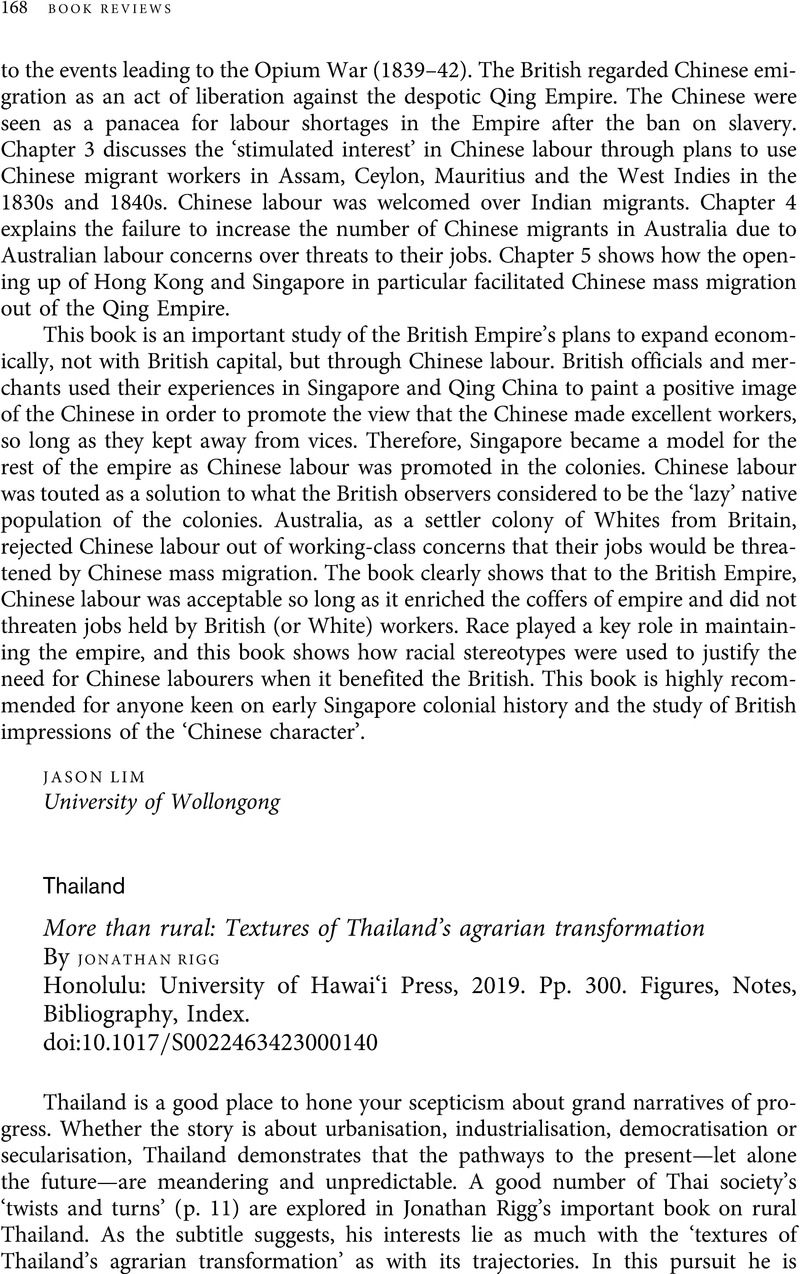No CrossRef data available.
Article contents
Thailand. More than rural: Textures of Thailand's agrarian transformation By Jonathan Rigg Honolulu: University of Hawai‘i Press, 2019. Pp. 300. Figures, Notes, Bibliography, Index.
Review products
Published online by Cambridge University Press: 03 April 2023
Abstract

- Type
- Book Review
- Information
- Copyright
- Copyright © The National University of Singapore, 2023



